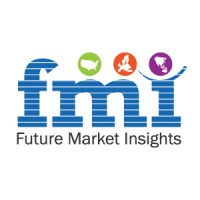According to Future Market Insights, the Betanin Food Colour Market is predicted to reach a market worth of about US$ 91 million by 2022, and then accelerate at a CAGR of 4.7% between 2022 and 2032. Large-scale food production businesses are shifting their focus to adding powdered betanin to their final product in order to boost the health profile of food goods in response to changing consumer demands. One such trend has been noticed in the soups, sauces, and dressings business, where beetroot red is added to dry sauce mix packs.
Other typical applications for betanins include colouring ice cream, confectionary, and beverages. Betanin is also used to colour meat and sausages. Betanin, sometimes known as beetroot red, is a vivid red pigment derived naturally from a plant and used as a food dye. Water-soluble betanin is produced by straining, diffusing, or pressing raw beetroots or other plants at a low pH.
Request for Report Sample
https://www.futuremarketinsights.com/reports/sample/rep-gb-14839
Increasing in the consumption of different organic end-use products, increase in the investment of huge amounts of money to set up food and beverage manufacturing and sales facilities, rise in the population, increase in the disposable income, and increase in the demand of betanin in developed and developing countries are driving the betanin food colors market.
Key Takeaways from Market Report
- The overall natural food colors market is expected to expand at a CAGR of 5% in North America through 2032, while the betanin food colors market is anticipated to grow at a rate of 5.7% in the region.
- The European betanin food colors market is currently pegged at 1550 metric tons by volume and USD 22 mn by value. The demand for beetroot red is about to grow at 3% CAGR between 2022 and 2032 in this region.
- By application, the beverages industry consumed over 1505 metric tons of beetroot red colorant in 2021 and was valued at USD 22.6 mn, which is approximately 25% of the annual Betanin food color sales.
- In relation to synthetic colorants like Azorubine, Allura Red, and others, betanin has lesser stability, which is a major restraining factor for market Another problem impeding the market’s desired growth is the higher product cost when compared to its competitors.
- Being a purely plant-based food colorant, pressed naturally from beets, no stringent regulations have been made around betanin food colors helping the market operate freely. Growing consumer preference for organic, healthy, and nutritious plant-derived food products is the main factor pushing the sales of betanin food colors across global markets.
Competitive Landscape
The Betanin food colors market is highly fragmented with several regional players operating. Market players leading the Betanin food colors market are Sensient Technology Corporation, Symrise A.G., Kanegrade Ltd., Merck & Co. Inc., Chr. Hansen Holding A/S, Kalsec Inc, Hunan Nutramax Inc., Nanjing Zelang Medical Technology Co. Ltd., Calyxt Inc., Kingherbs Limited, JF Natural, A.M. Todd Botanical Therapeutics, Bakels Worldwide, Monteloeder, and Hebei Shun Wei Biological Technology Co. Ltd. among others.
Request For Methodology
https://www.futuremarketinsights.com/request-report-methodology/rep-gb-14839
Betanin Food Colors Market by Category
By Nature, the Betanin food colors market is segmented as:
- Organic
- Conventional
By Application, the Betanin food colors market is segmented as:
- Bakery & Confectionery Products
- Beverages
- Fruit Preparations/ Fillings
- Dairy Food Products
- Potatoes, Pasta, and Rice
- Soups, Sauces, and Dressings
- Meat, Poultry, Fish, and Eggs
- Seasonings
- Others
By Source, the Betanin food colors market is segmented as:
- Red Beet
- Yellow Beet
- Prickly Peer
- Swiss Chard
- Grain Amaranth
- Cactus Fruits
- Others
By Product Form, the Betanin food colors market is segmented as:
- Powder
- Liquidd
By Region, the Betanin food colors market is segmented as:
- North America (U.S., Canada, Mexico)
- Latin America (Brazil, Argentina, Chile, Peru, Bolivia)
- Europe (Germany, U.K., France, Italy, Spain, Poland, Russia), Middle East & Africa (GCC Countries, Turkey, Northern Africa, South Africa), India
- Asia-Pacific (China, Japan, South Korea, Thailand, Malaysia, Vietnam, Indonesia, Oceania (Australia, New Zealand)
The report covers exhaustive analysis on:
- How Much Does Betanin food colors market contribute to the Natural Food Colors Market?
- What is the outlook for Betanin Food Colors Demand in Latin America?
- At What Rate will Betanin Food Colors Demand Grow in Asia-Pacific?
- Which is the largest source for raw materials of Betanin food colors?
- How big is the Betanin Food Colors Market?
About Future Market Insights (FMI)
Future Market Insights, Inc. (ESOMAR certified, recipient of the Stevie Award, and a member of the Greater New York Chamber of Commerce) offers profound insights into the driving factors that are boosting demand in the market. FMI stands as the leading global provider of market intelligence, advisory services, consulting, and events for the Packaging, Food and Beverage, Consumer Technology, Healthcare, Industrial, and Chemicals markets. With a vast team of over 400 analysts worldwide, FMI provides global, regional, and local expertise on diverse domains and industry trends across more than 110 countries.
Contact Us:
Future Market Insights Inc.
Christiana Corporate, 200 Continental Drive,
Suite 401, Newark, Delaware – 19713, USA
T: +1-845-579-5705
For Sales Enquiries: sales@futuremarketinsights.com
Website: https://www.futuremarketinsights.com
LinkedIn| Twitter| Blogs | YouTube
